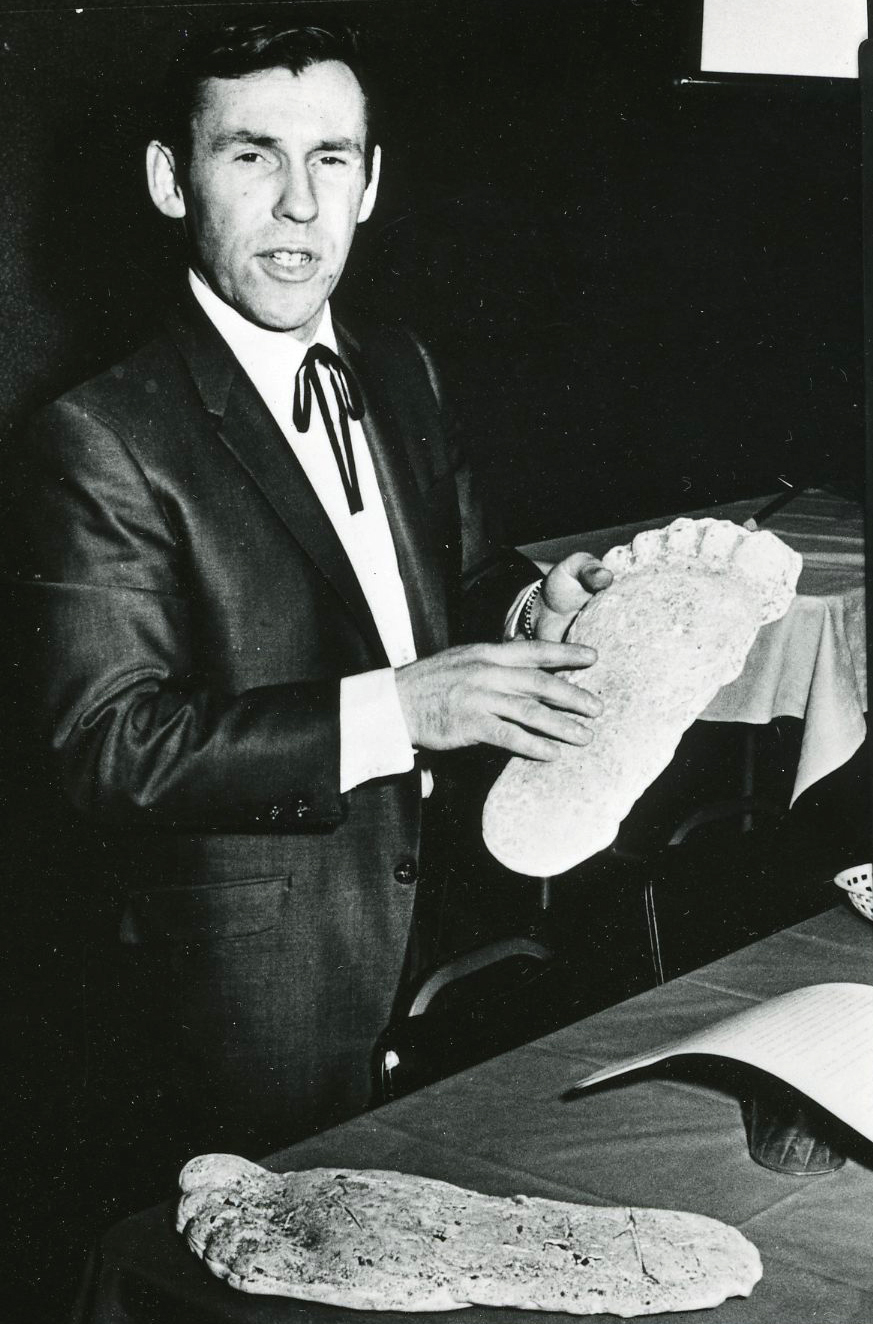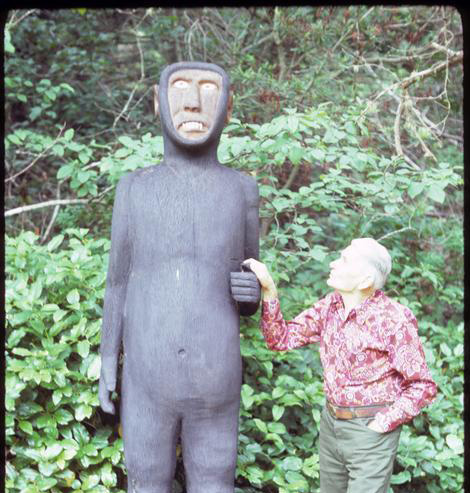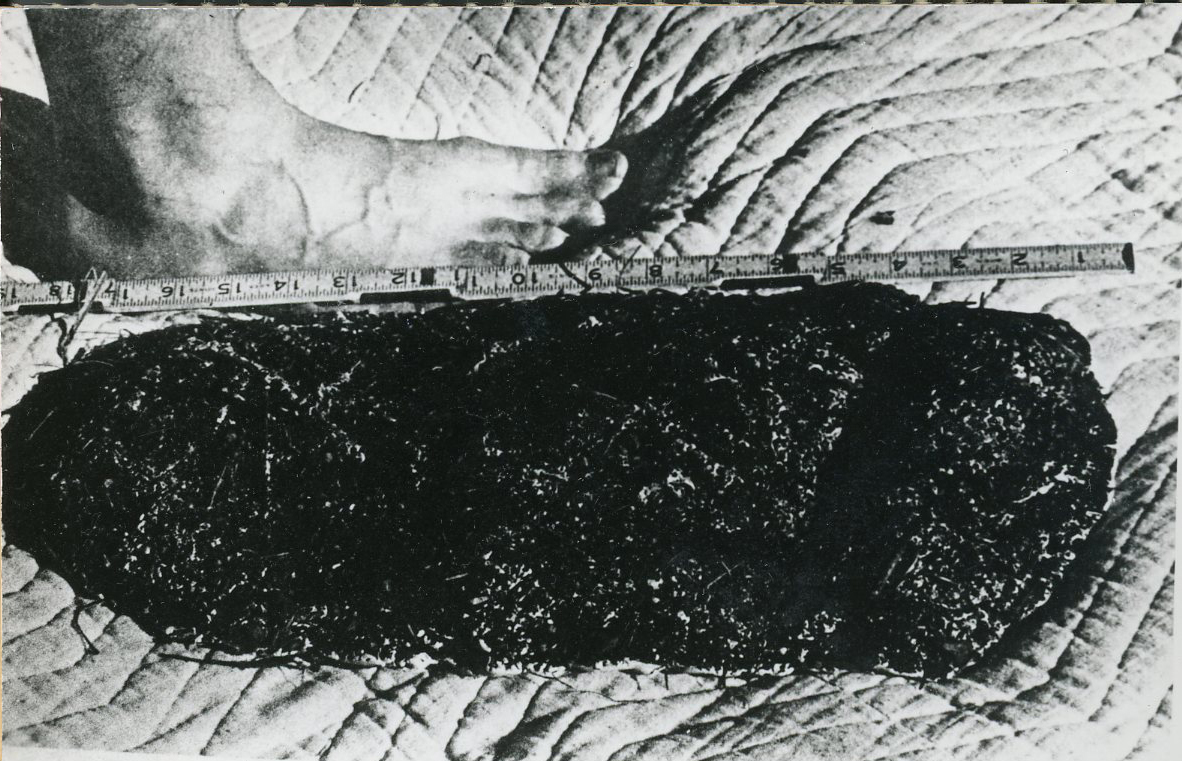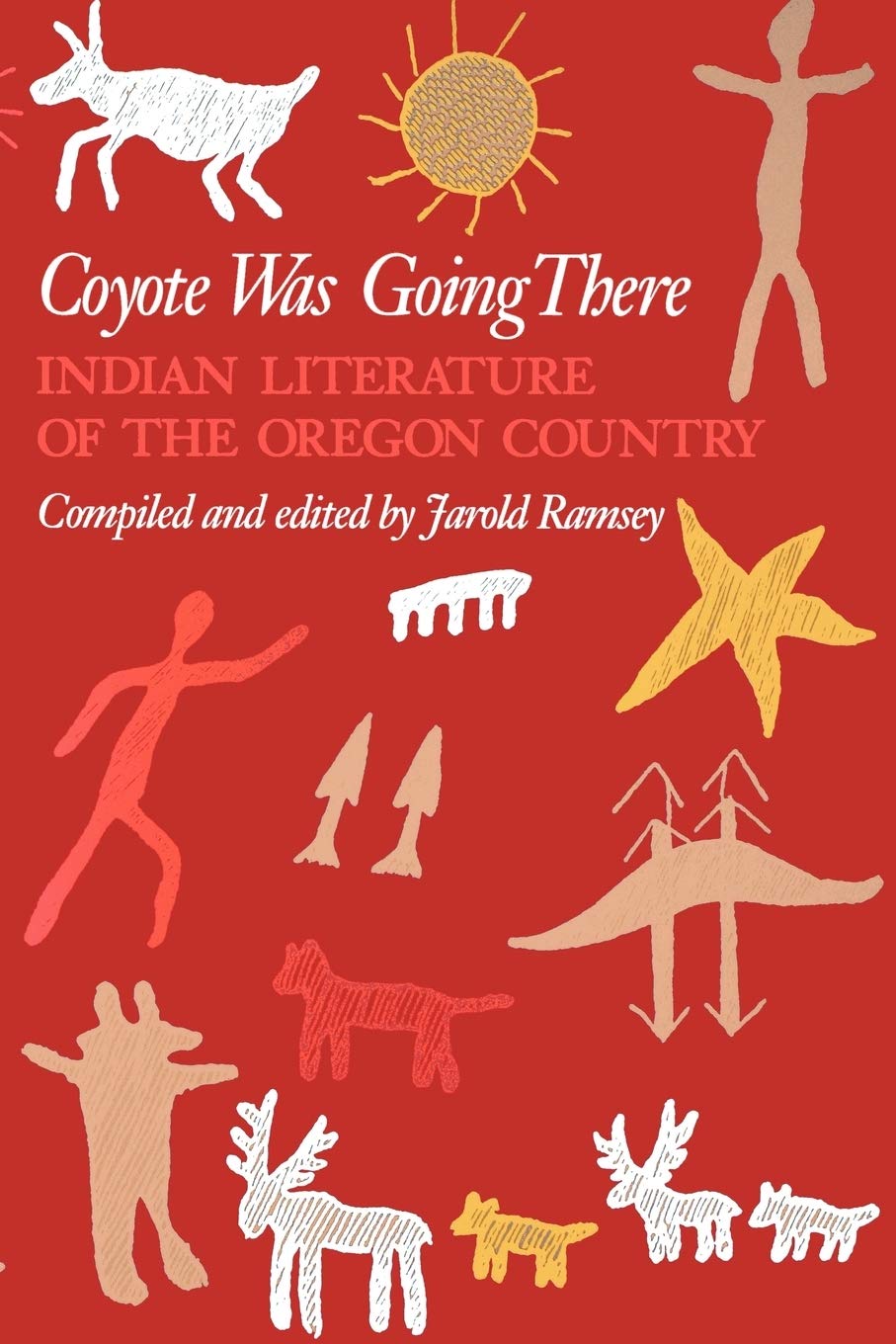Bigfoot is a large and mysterious humanoid creature purported to inhabit the wild and forested areas of Oregon and the West Coast of North America. Bigfoot is also known as Sasquatch, an Anglicization of the name Sasq’ets, from the Halq’emeylem language spoken by First Nations peoples in southwestern British Columbia.
Most people who believe in Bigfoot’s existence, or claim to have seen one, assert that they are hair-covered bipeds with apelike features up to eight feet tall that leave correspondingly large footprints. They are generally characterized as nonaggressive animals, whose shyness and humanlike intelligence make them elusive and thus rarely seen, though some wilderness travelers claim to have smelled their stench or heard their screams and whistles.
A few physical anthropologists, such as Jeff Meldrum at Idaho State University and Grover Krantz at Washington State University, have espoused the biological reality of Bigfoot based on their examination of the 1967 film footage of a purported Bigfoot taken in northern California’s Klamath Mountains or on their morphological analysis of footprints, some of which exhibit dermal ridges, as those found in the 1980s by a U.S. Forest Service employee in the Blue Mountains of northeastern Oregon. Most scientists, however, remain skeptics and dismiss the phenomenon as the product of the mistaken identification of known animals or elaborate hoaxes, with prints cleverly planted to deceive.
Over time, stories about Bigfoot have entered into oral tradition and become part of regional folklore. The historical record of Bigfoot in the Oregon country begins in 1904 with sightings of a hairy “wild man” by settlers in the Sixes River area in the Coast Range; similar accounts by miners and hunters followed in later decades. In 1924, miners on Mount St. Helens claimed to have been attacked by giant “apes,” an incident widely reported in the Oregon press. Local Native Americans used this event to discuss publicly their own knowledge of tsiatko, hirsute “wild Indians” of the woods, traditions first documented in 1865 by ethnographer George Gibbs.
After 1958, woods workers east and west of the Cascade Mountains began to report seeing creatures and discovering their immense tracks along logging roads, enhancing public recognition of the Bigfoot name. Witnesses observed these so-called humanoids crossing roads at night, striding furtively through forest and mountain terrain, or digging for and eating ground squirrels in rock piles.
Bigfoot quickly entered into the occupational culture of loggers, manifested as serious stories, jokes, chainsaw sculptures, and fabricated prints as playful pranks. By the 1970s, former Yeti-hunter Peter Byrne had established the Bigfoot Information Center at The Dalles, gaining national media attention for his documentation of eyewitness testimony and footprints adduced as evidence for a new species of primate. Footprints in dirt or snow continue to be found and reported to various organized groups who have followed Byrne’s efforts.
Native Americans in Oregon have increasingly situated Bigfoot within traditional belief systems as beings with deeply rooted cultural significance. Tribes in coastal Oregon related Bigfoot to ancient tales of “wild men” who lurked near villages and left immense tracks, as described in Clara Pearson’s tales from the Nehalem Tillamook. Members of Plateau tribes, such as those at the Warm Springs Reservation, identify Bigfoot as a “stick Indian,” a diverse category of potentially hostile beings who stole salmon or confused people by whistling, causing them to become lost. Sightings and stories continue on reservations today, representing a spiritual connection to the pre-contact past and the resilience of Indigenous cultural heritage.
More recently, Bigfoot in popular culture has devolved into a series of sports mascots, children’s entertainments, and cryptozoological reality shows. It has also been playfully promoted in state legislation and celebrations. Politicians in both Oregon and Washington have proposed bills to protect the creatures from hunters, and hairy humanoids have served as official state mascots, first as Harrison Bigfoot for Washington’s Centennial in 1989 and then Seski the Sasquatch for Oregon’s Sesquicentennial in 2009.
A number of prominent writers have reflected thoughtfully on the tradition in literature that explores changing attitudes toward the natural world. Through fiction and science writing, they have depicted Bigfoot as a kind of charismatic megafauna that emerged in the modern environmental imaginary as an icon of enchantment and endangerment, employed to remythologize connections between humans and the wild in the region’s compromised but not unredeemable landscapes. In The Klamath Knot (1984), for example, natural historian David Rains Wallace uses Bigfoot to discuss relict species, mythic themes, and evolutionary narratives in his portrait of the Klamath Mountains. In Where Bigfoot Walks (1995), lepidopterist Robert Michael Pyle writes about his personal search for evidence of Bigfoot in the mountains of the Columbia River Gorge as he contemplates the human need for wilderness and what he calls the “divide” between human and animal. Portland-based novelist Molly Gloss borrows from both Native American traditions and the legacy of feminist primatology in Wild Life, an elegant fiction of ecological sensibilities and zoological mystery on the lower Columbia River in the early twentieth century.
Like salmon, Bigfoot has become an important symbolic resource through which many Oregonians and Northwest residents have defined their identities and considered their place in the natural world.
-
![]()
A plaster cast of a footprint of an "abominable snow lady" that Roger Patterson claimed he filmed in Northern California.
Courtesy Oreg. Hist. Soc. Research Library, 013499
-
![]()
"Sasquatch," in Tillamook, 1979.
Randall V. Mills Archives, Oregon Folklife Alliance coll. Courtesy Univ. of Oreg., OFA_79_DK_A64_044
-
![]()
The cast of a reported Sasquatch footprint nears Mt. St. Helens, 1974.
Courtesy Oreg. Hist. Soc. Research Library, 020027
Related Entries
Map This on the Oregon History WayFinder
The Oregon History Wayfinder is an interactive map that identifies significant places, people, and events in Oregon history.
Further Reading
Byrne, Peter. The Search for Bigfoot: Monster, Myth, or Man. NY: Pocket Books, 1976.
Gloss, Molly. Wild Life. Boston: Houghton Mifflin, 2000.
Pyle, Robert Michael. Where Bigfoot Walks: Crossing the Dark Divide. Boston: Houghton Mifflin, 1995.
Wallace, David Rains. The Klamath Knot: Explorations of Myth and Evolution. (2nd Edition) Berkeley: University of California Press, 2003.




